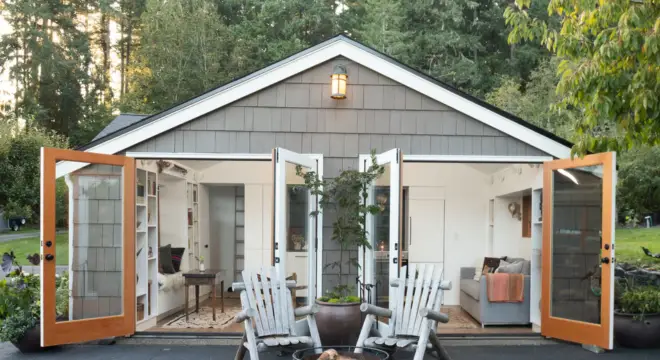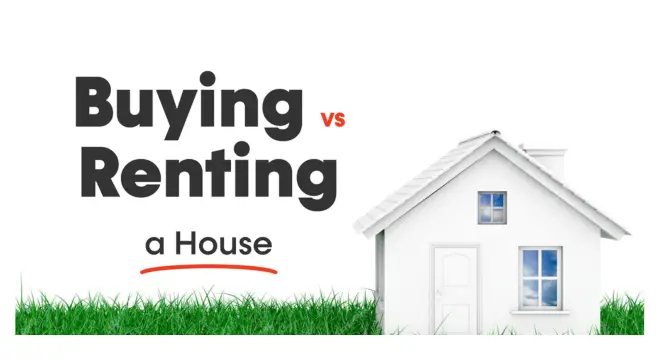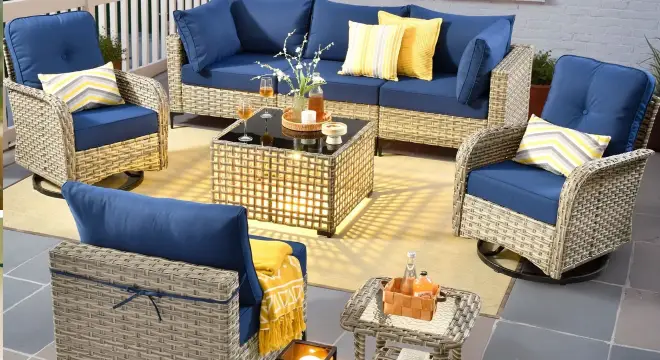Essential Things to Consider Before Setting Rent for a Tiny House in Your Backyard
Have you ever thought about renting out space in your backyard for a tiny house? The tiny house trend is growing rapidly, and more people are opting for smaller living spaces. But if you have extra space in your yard, could renting it out for a tiny house be a good idea? How do you decide what a fair rent should be so that it’s reasonable for both you and your tenant?
In this article, we’ll walk you through everything you need to consider when setting rent for a tiny house in your yard.
Whether you’re looking to offer affordable housing or make some extra income, we’ve got you covered with all the important details to help you make an informed decision.
2. Assessing the Property
Before you set a price for the tiny house, it’s crucial to evaluate the space and resources that will be provided. Here’s how you can assess the property to ensure you’re offering a fair and sustainable arrangement:
- Space and Layout: The size and layout of the tiny house will directly influence its rent. Consider how much space your tenant will actually have in the tiny house and how it fits within your backyard. A larger tiny house, or one with a more functional layout, can justify a higher rent. Additionally, keep in mind that the layout should allow for privacy, which is an important factor for tenants.
- Amenities and Common Resources: The amenities you provide are important in setting the rental price. If the tiny house has use of your bathroom, kitchen, water, electricity, and Wi-Fi, you should build in rental price for these arrangements. For example, if the tiny house uses your water and electricity, you should subtract these expenses when calculating rent. Also, if the tenant occasionally uses your kitchen or internet, you should also factor those into the rent. Consider how much they will use and how that would impact your own living costs.
3. Calculating Utility Costs
Utility costs are a significant part of the rent and can be a bit tricky to divide fairly. Here’s how you can break down the key utilities:
Electricity:
If the tiny house is on your electricity, you will need to assess how much energy is being used for the tenant’s appliances, lighting and heating and cooling. One option is calculating that based on the percentage of your total electricity bill contributed to the tiny house. For example, if your total electricity bill is $470, and the tiny house uses 15% of the total energy, that would mean the tenant was responsible for $70. Each month the percentage of electricity usage could be different if the appliances are different as well as the lighting, as well as if the tenant used heating and cooling.
Water Usage:
In the event that the tenant uses your water for their tiny house, you will need to estimate how much water they are using. Without water meters, this will be difficult, but you can estimate the quantity of use based on your average water bill for your property. For example, if you average $50 dollars a month in water, and you estimate that the tenant is using 10% of total water and will add $5 to your water bill. If the tenant is also filling their own water tank, then their water use in your water will be negligible, and there will be no charge.
Wi-Fi:
If your tenant shares your Wi-Fi, it’s pretty simple to determine a fair amount. For instance, if your Wi-Fi bill is $100 per month and your tenant is on the network, you can divide the bill by how many people are in your household, or consider how much the tiny house is contributing to the overall household. If you feel it is fair, you would likely charge them $20-$30.
By keeping the cost separate, you ensure that you are not overcharging or undercharging your tenant, and you are recapturing an expense fairly.

4. Evaluating Reciprocal Contributions
When determining rent for a tiny house on your property, it’s important to consider not just monetary factors but also the non-monetary contributions your tenant makes. These contributions can be just as valuable and may influence the final rent calculation. Here’s how:
Non-Monetary Benefits:
- Caring for Animals: Your tenant could take care of your pets while you’re away; feed and care for them. This is a significant commitment requiring time and energy. For example, if goats and ducks, with a dog and a cat, are in their responsibility, this could be a major undertaking, chiefly while you’re absent at home. Perhaps you could consider allowing a discount from the rental price for this reason, or offering a little compensation for their time.
- Babysitting: If your tenant is helping out with your baby, watching them, or giving you some time off when needed, this too is a valuable contribution. This kind of support can be considered when negotiating rent. Babysitting is not only an act of kindness but also provides a service, and you may want to account for it when figuring out rent.
Balance Between Shared Responsibilities and Rental Income:
While it’s important to factor in these contributions, it’s essential to strike a balance between shared responsibilities and rental income. You want to ensure that the rent you’re charging is fair and reflective of the space, utilities, and services provided, while also considering the help your tenant is providing.
This is where clear communication comes into play. Have an open discussion about the value of non-monetary contributions and how they should be factored into the rent agreement. It’s important to find a balance where both parties feel like they’re getting a fair deal, and no one feels overburdened or underappreciated.
5. Understanding Market Rates
Setting a fair and competitive rent for a tiny house in your backyard requires a thorough understanding of the local rental market. The price you charge should not only reflect the costs of utilities and contributions from your tenant but also align with what similar properties are renting for in your area. Here’s how to approach this:
Analyze the Local Rental Market:
Research Local Listings: Look at comparable tiny homes, backyard rentals, or even small apartment rentals in your area. Websites like Zillow, Craigslist, or local real estate listings can give you a good sense of what others are charging for similar spaces. Be sure to consider factors such as the size of the property, its amenities, and the location.
Consider Local Demand: Is there a high demand for rental properties in your area, particularly for tiny homes? In places where housing is in high demand or rental spaces are limited, you may be able to charge more. However, it’s important to make sure that the rent you’re asking aligns with the local market to avoid pricing yourself out or underpricing.
Economic Factors and Inflation:
Impact of Inflation: Inflation affects the cost of living, including rent prices. In times of rising costs, you may need to adjust the rent to reflect increased utility costs, maintenance, and the general increase in the cost of living. Make sure to periodically review and adjust your rental price based on inflation trends.
Economic Shifts: Economic shifts, such as changes in the job market or local industry, can affect how much people are willing to pay for rental spaces. If the economy is facing a downturn, tenants may be more sensitive to rent increases, so it’s important to take these factors into account when setting your rent.
Setting a Fair Price: After considering the local rental market and economic shifts, aim to set a rent price that is competitive but still fair. Make sure it covers your costs, such as utilities and any contributions made by the tenant, while staying within the ballpark of what others are charging. It’s also important to ensure the rent price is something that the tenant feels is reasonable for the space and amenities they are receiving.
6. Legal and Regulatory Considerations
Before renting out a tiny house in your backyard, it’s crucial to understand the legal and regulatory requirements that govern such arrangements. Ensuring your setup complies with local zoning laws, rental regulations, and other legalities not only protects you as a homeowner but also ensures that your tenant is living in a safe and legal environment. Here’s how to navigate this:
1. Zoning Laws:
Check Local Zoning Regulations: Zoning laws regulate how land can be used in specific areas. Some municipalities have restrictions on renting out accessory dwellings, such as tiny houses. Before moving forward, it’s important to verify that your property is zoned in a way that allows you to legally rent out a portion of your yard. This may involve checking with your local planning or zoning department to see if any special permits or changes are required.
Size and Placement Restrictions: Certain zoning regulations might also impose limits on the size, placement, and distance of the tiny house from property lines or other structures. It’s important to understand these guidelines to avoid any violations and potential fines.
2. Rental Agreements and Tenant Rights:
Written Lease Agreement: Even for a backyard rental, it’s essential to have a formal, written lease agreement in place. This should outline the terms of the rental, including the rent amount, payment schedule, responsibilities of both parties, and other essential rules, such as shared use of amenities and the maintenance of the space. A well-drafted lease can prevent misunderstandings and legal disputes down the road.
Tenant Rights and Protection: As a landlord, you need to familiarize yourself with local landlord-tenant laws, which protect the rights of tenants. These laws govern issues like eviction procedures, rent increases, and the tenant’s right to privacy. In some areas, even short-term rentals or backyard homes may be subject to these laws, so it’s important to know what you’re legally required to provide and what your rights and responsibilities are as a landlord.
3. Building Codes and Permits:
Tiny House Codes: If your tiny house is a moveable structure or has been newly built, ensure that it complies with any relevant building codes. These codes can address issues like plumbing, electrical, and structural safety. In some cases, local municipalities require specific permits or inspections for tiny homes, especially if they’re hooked up to utilities.
Utility Connections: Since your tiny house will be using electricity, water, and other utilities, check with your local authorities to ensure that the connections are up to code and that you’re not violating any utility-sharing agreements. You may need permits or approvals for these utility setups.
4. Insurance Considerations:
Homeowner’s Insurance: Make sure that your homeowner’s insurance covers rental arrangements and the potential risks associated with renting out a portion of your property. Some insurance policies require you to update your coverage when you rent out a space on your property. Verify that your insurance covers both the tiny house and any liability issues that might arise.
Tenant Insurance: It’s also a good idea to require your tenant to have renters insurance. This ensures that their personal property is covered in case of damage, theft, or other issues. It also protects you from potential liability claims if something goes wrong on your property.
7. Setting the Rent Price
Setting the right rent price for your backyard tiny house involves considering a combination of factors, including utility usage, market rates, shared responsibilities, and legal considerations. The goal is to arrive at a fair and equitable rent that reflects the value of the space while being affordable for your tenant.
1. Combine All Factors
To calculate a reasonable rent price, take into account the following:
Utility Usage:
- Determine the portion of utilities like electricity, water, and Wi-Fi that the tiny house will be using. You can estimate this by reviewing past utility bills and considering the amount of consumption from the tiny house. If your tenant uses a lot of electricity for heating, cooling, or running appliances, factor this into the rent price.
Market Rates:
- Research the average rental prices for similar spaces in your area. This will give you an idea of what other people are charging for backyard rentals, tiny homes, or accessory dwelling units (ADUs). Be sure to account for factors like location, space size, and amenities offered.
Shared Responsibilities:
- If your tenant is contributing to the household through non-monetary means—such as babysitting, animal care, or helping with chores—this should be reflected in the rent price. You could either adjust the rent downward or incorporate their contributions into the overall agreement, as they help offset some of your costs.
Legal Considerations:
- Ensure that the rent is in compliance with local regulations, including any limits on rent prices or tenant protections. Don’t prize the rent too high if local laws have restrictions on rent increases or require certain standards to be met in rental agreements.
2. Suggest a Range or Pricing Structure
Once you’ve considered all these factors, you can create a pricing structure that ensures fairness. Here are a few suggestions:
Flat Monthly Rent:
- A flat rent price is the simplest option, where the tenant pays a fixed amount every month based on all factors considered. For example, if your total monthly expenses for utilities are around $400, and the average market rate for a similar tiny home rental in your area is $800, you might charge a rent of $600 to $700. This price would reflect the utilities and space provided, adjusted for the value of the shared services.
Utility-Based Pricing:
- If your utility costs vary month to month, you could opt for a rent structure where the base rent covers the space and amenities, and the tenant pays a separate fee for utilities. This could be a flat fee each month or a variable rate based on actual usage.
Discounted Rent for Reciprocal Services:
- If the tenant is providing regular help with chores or childcare, consider offering a reduced rent. For example, if they are helping care for animals or assisting with tasks regularly, you could adjust the rent downward by a set amount each month.
Example Rent Breakdown:
- Base Rent: $500 (for the space, privacy, and basic utilities)
- Utilities (electricity, water, Wi-Fi): $100-$150 (estimate of shared costs)
- Discount for Reciprocal Services: -$50 (if the tenant helps with animal care or babysitting)
Total Rent: $550-$600/month
This example shows how to combine the factors to arrive at a fair price. It’s important to revisit the rent amount annually or whenever significant changes occur (such as inflation or rising utility costs).
3. Consider Long-Term Sustainability:
Finally, ensure that the rent you set not only covers your costs but also remains sustainable for you in the long run. Rent that is too low might not adequately cover your expenses or make the arrangement financially viable. On the other hand, a price that’s too high could strain your tenant’s budget and create tension in the relationship.
8. Conclusion
In setting fair rent for a tiny house in your backyard careful factors including, space, utility costs, and market rates have to be considered. These factors should be balanced properly so that it favors both yourself and the tenant.
Consider all factors before settling on a rental price. Fairness and clarity will guarantee a good relationship with your tenant and also that the arrangement is in such a way that both sides benefit.


